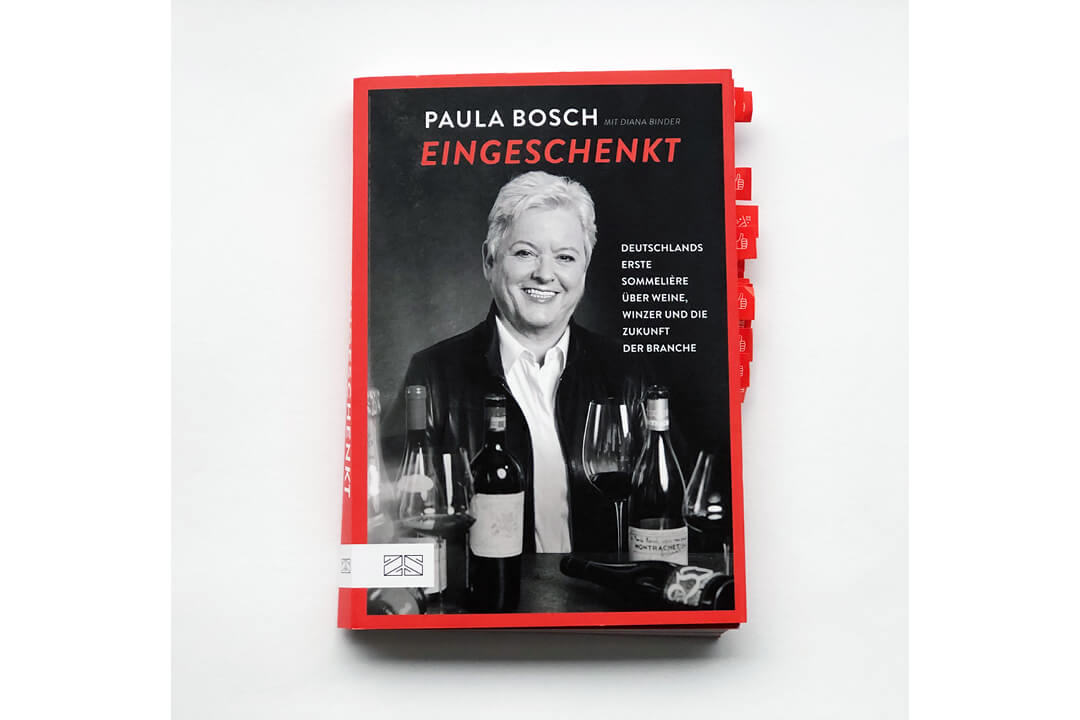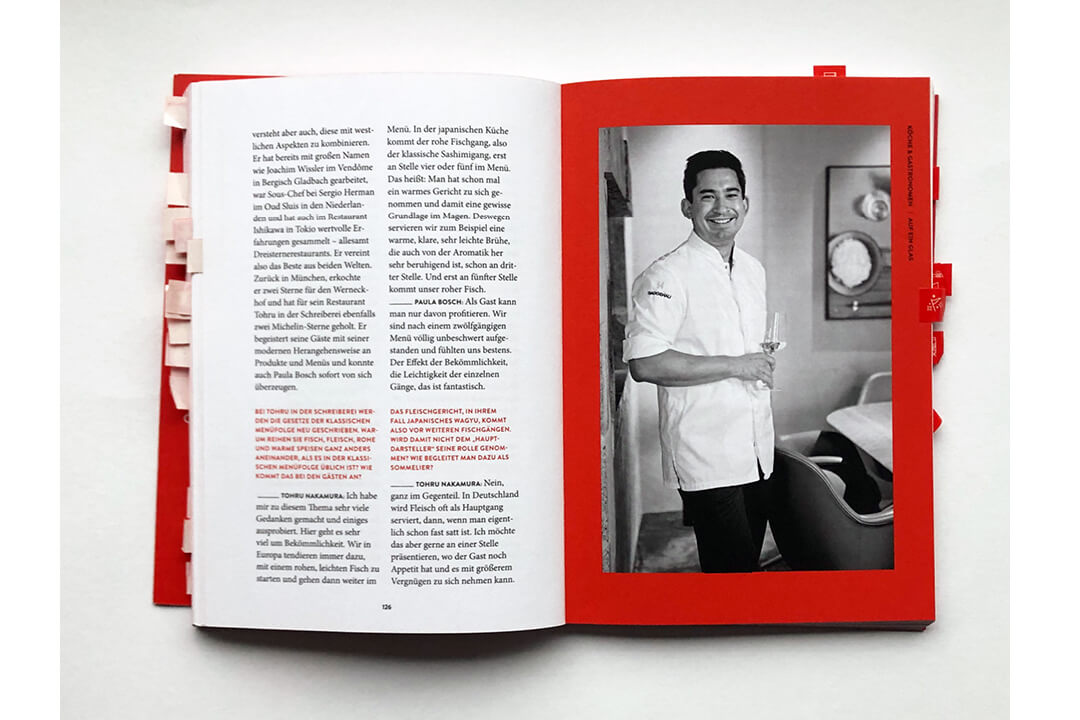The book by sommelier Paula Bosch. Suitable for every glass.
Things to know about wine in restaurants, in the trade and the future of the sommelier
Without any respect
We came across the book “Eingeschenkt” by Paula Bosch in an article in the Frankfurter Allgemeine Zeitung. The completely disrespectful, caustic comments under the article prompted us to buy the book:
“Who needs a sommelier these days?”
“Completely superfluous, just steals my time”
We will spare you the unspeakable original comments.
We have some sommelières to thank for many exciting wine discoveries and interesting conversations and were interested to hear what an excellent sommelière thinks about wines, winemakers and the future of the industry.

Paula Bosch – Germany’s first sommelier
It’s hard to believe, but the profession of sommelier was a purely male domain in Germany until the 1990s.
Paula Bosch, who worked for seven years as head sommelière at the Victorian restaurant in Düsseldorf and then for almost twenty years at the legendary Tantris restaurant in Munich, was the only sommelière in Germany when she was named “Sommelière of the Year” by Gault & Millau in 1988.
Even as a child, she was allowed to accompany her mother and godmother on trips to Austria, especially Burgenland, to buy wine. The trips through the beautiful wine landscapes inspired her and her curiosity to discover interesting wines from local winegrowers remains unchanged.
Taste and study
The American Victoria James also describes in her book Wine Girl that the path to becoming a sommelière requires the acquisition of immense detailed knowledge and the extensive tasting of wines: At work in restaurants, on excursions to wine regions and equally by buying wines privately.
Paula Bosch sees the tasting of expensive wines as the Achilles’ heel in the training of future generations of sommeliers.

The prices for renowned and globally sought-after top wines have risen to astronomical heights, so that young sommeliers often no longer have the chance to taste these wines and gain experience with them during their training.
Interestingly, Paula Bosch and some of her interviewees in the book do not see a great future for the sommelier profession in exclusive top gastronomy.
In restaurants such as Masa in New York, where the menu price starts at 800 US dollars (excluding drinks), or at the Beaverbrook Estate in England, where a wine list can hardly be found for less than 1000 pounds sterling, you can easily do without a sommelière in her opinion.
The majority of guests there know the most prestigious wines or pretend to know them. Ordering wine as a form of name-dropping.
The prospects of working in a restaurant as a sommelière are much better in restaurants that do not only stock the most expensive wines and whose guests are interested in learning and making new discoveries in the wide range of national and international wines on offer.
Pizzeria with sommelier
Daniel Kurosh, sommelière from restaurants that have been awarded three stars by the Michelin Guide for many years, now works for nineofive, which now combines the classic program of a good pizzeria with sophisticated wines not only in Munich, but also in Augsburg, Düsseldorf, Jena and Regensburg.
A concept that immediately makes sense: The enjoyment of a good pizza becomes a wonderful pleasure with a good wine. Who can claim to know all the good Italian wines from the different regions? And which wine goes with pizza if you love it with extra anchovies?
You won’t find any wine tips in this book
Only a handful of favorite wines from Paula Bosch and her conversation partners are mentioned. However, the book contains many interesting tips and suggestions for anyone interested in wine.
Paula Bosch holds back when it comes to rating individual wines, but otherwise doesn’t mince her words when it comes to wine accompaniment, some of the tactics of the online wine trade, the famous point ratings of wines or arrogant guests in restaurants.
In addition to texts by Paula Bosch, the book contains interviews with young sommeliers, winemakers, chefs such as Hans Haas and Toru Nakamura, the restaurateur Axel Bach, an enthusiastic guest and wine discoverer, and the Swiss wine journalist Chandra Kurt under the heading “A glass with Paula Bosch”.

You can learn valuable information from each of these conversations that you can immediately apply to your own wine enjoyment.
Have you ever studied the terms and conditions of your online wine retailer? You should be careful here, for example, if the terms and conditions allow a different vintage to the one ordered to be delivered.
The so-called special editions of online retailers should also be viewed critically, as even wines from renowned winegrowers are sometimes represented there that are characterized by a lower price but reduced quality compared to the winery’s other offerings.
Expand your circle of acquaintances
For your own wine cellar, it is worth looking for good local wine merchants and building up a relationship. Especially with wine merchants who don’t just rave about their own wine discoveries in conversation, but who listen attentively, ask questions and want to build customer loyalty with good recommendations.

Give unfamiliar wine a chance
Experienced sommelière Paula Bosch also gives wines that she doesn’t like the first time she tastes them a second and sometimes third chance, and warns against wines that seduce with a variety of aromas when sampled, but are unable to maintain the impressive entrée later on.
We all have our taste preferences and unconsciously look for similar taste experiences. Often, a wine that doesn’t fit into this pattern only reveals itself after the second or third glass – sometimes not until the next day.
At Paula Bosch, the opened bottles are left in the kitchen to prove themselves the next day or sometimes even the day after.
Incidentally, this is one of the arguments put forward in the book against the omnipresent wine accompaniment in almost all restaurants at the moment. An unfamiliar wine, which perhaps only gives pleasure with the second or third glass, has little chance of being discovered and loved from then on.
In addition, the price-performance ratio of 0.1 glasses and wines, which are not always among the favorites, but perhaps had to be bought in a bundle from the restaurant in order to get the really interesting wines, is not always coherent.
The future is biodynamic
Almost all the experts featured in the book believe that the future belongs to biodynamic wines, which currently still have a relatively small market share.
In Paula Bosch’s book, which was published in 2022, an average price of EUR 3.00 per bottle is quoted for wine bottles purchased on the German market. Biodynamics, with its higher labor input and greater risk, is not possible.

Travel to the wine
Paula Bosch’s love belongs to the upright winegrowers who sometimes work hard on extremely steep slopes and at the whims of nature to offer us a good wine. After reading the book, you’ll want to head off to wine regions to study and taste.
She advises visiting a wine region in different seasons if possible to get a better feel for the area, its people and the climate. This is also advice that we can well understand, as our image of Champagne, for example, is characterized by icy, foggy days, the hard work in the vineyards and the down-to-earth dishes there. On sunny harvest days, it looks wonderful in all wine-growing regions.
The ideal guide to even more wine knowledge
The book also contains the names of the most important wine experts, standard works on the subject of wine and important websites on the subject of wine.
For all friends who, like us, appreciate the advice of a good sommelière and who would like to know more about wine themselves, this easy-to-read but well-founded introduction by Paula Bosch is sure to please.
Criticism
We have to pour a little water into the wine: The book deserves more careful editing. Sentences, no matter how well formulated, are not something you want to find 2-3 times in the book.
And the production of the paper version also leaves a lot to be desired. The typography is very pleasant to read, but a book should not fall apart after the first reading.
We take comfort in the fact that we have learned a lot and plan our next trip to an interesting wine region.
If you would like a little more on the sparkling topic of wine, the ARTE Mediathek has a film worth watching entitled “Crémant, the fine Alsatian to celebrate”. In it, you can learn a lot about crémant and Alsace and see one of France’s best-known sommeliers, Serge Dubs, at work.
Anyone who believes that sommelièrs are superfluous has unfortunately never had the good fortune to meet a good sommelièr.
Photographs © GloriousMe




